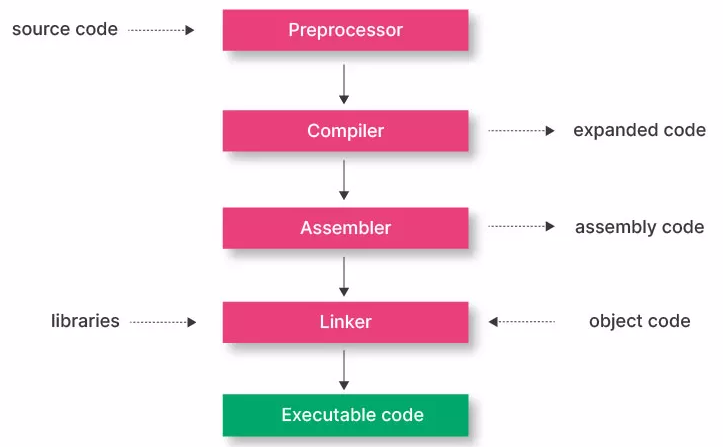Module 1: Introduction to C Language
Introduction to Programming
- Basics of Programming
- Programming Paradigms
History and Features of C
- Origin of C
- Features and Benefits
Structure of a C Program
- Writing the First Program
- Compiling and Executing a Program
Data Types and Variables
- Basic Data Types
- Variable Declaration and Initialization
- Constants and Literals
Module 2: Operators and Expressions
Operators in C
- Arithmetic Operators
- Relational Operators
- Logical Operators
- Bitwise Operators
- Assignment Operators
- Miscellaneous Operators
Expressions
- Evaluation of Expressions
- Precedence and Associativity
- Type Conversions
Module 3: Input and Output
Basic I/O Functions
- Using printf() and scanf()
- Formatted I/O
File I/O
- Reading from and Writing to Files
- File Operations and Modes
Module 4: Control Statements
Decision Making
- if, if-else, Nested if-else
- switch-case
Looping Constructs
- for Loop
- while Loop
- do-while Loop
Jump Statements
Module 5: Functions
Introduction to Functions
- Function Declaration and Definition
- Calling Functions
- Function Prototypes
Parameter Passing
- Call by Value
- Call by Reference
Scope and Lifetime of Variables
- Local and Global Variables
- Static and Dynamic Scope
Recursion
- Basics of Recursion
- Recursive Functions
Module 6: Arrays and Strings
Arrays
- One-Dimensional Arrays
- Multi-Dimensional Arrays
- Array Manipulation
Strings
- String Handling Functions
- Array of Strings
Module 7: Pointers
Basics of Pointers
- Pointer Declaration and Initialization
- Pointer Arithmetic
- Pointers and Arrays
- Array of Pointers
- Pointer to Array
Pointers and Functions
- Passing Pointers to Functions
- Function Returning Pointers
Dynamic Memory Allocation
- malloc(), calloc(), realloc(), and free()
Module 8: Structures and Unions
Structures
- Defining and Using Structures
- Array of Structures
- Nested Structures
Unions
- Defining and Using Unions
- Difference between Structures and Unions
Enums and Typedef
- Enumerated Data Types
- Type Definition
This curriculum covers comprehensive topics essential
for learning C programming, from basic concepts to
advanced topics like pointers, dynamic memory
allocation, and file handling. Mastering these modules
will provide a solid foundation for developing efficient
and scalable software in C.



